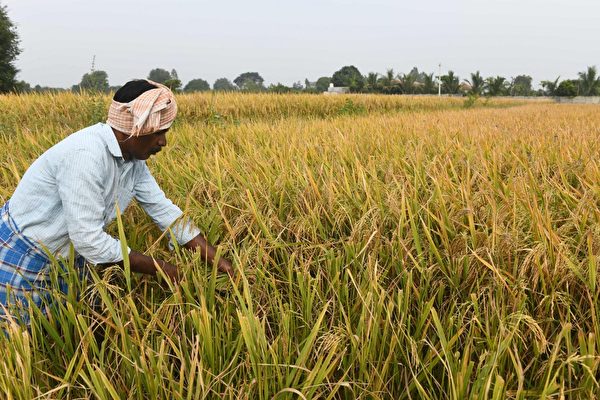India may relax export restrictions on certain rice varieties due to optimistic prospects for rice production, to avoid a domestic surplus situation after the new rice hits the market in October.
According to Bloomberg citing unnamed Indian officials, the Indian government is considering allowing fixed tariff exports of rice. The report suggests that Indian authorities may cancel the 20% export duty on parboiled rice and instead impose a fixed tariff to prevent the issuance of low-value invoices for export goods.
Indian government data shows that in the first two months of the current fiscal year starting from April 1, total rice exports from India decreased by 21% compared to the same period last year, dropping to 2.9 million tons. Meanwhile, exports of non-basmati rice decreased by 32% to 1.93 million tons during the same period.
The Indian Ministry of Agriculture stated that following insufficient rainfall last month, the monsoon rains have arrived, and as of July 8, the planting area covers 6 million hectares, showing a 19% year-on-year increase. July is the peak season for rice cultivation in India, with harvesting expected to begin in late September.
Officials in India emphasize that the distribution of rainfall between July and September is crucial for rice production and will also determine the country’s next steps in rice export policies.
Easing export restrictions not only helps stabilize rice prices but also alleviates the tight global rice supply situation. Global rice prices have been on the rise since India restricted rice exports.
In January of this year, the benchmark Asian rice price (Thailand white rice with a broken rate of 5%) reached the highest point in 15 years and has since remained at historically high levels.
India is the world’s second-largest rice producer and the largest rice exporter. In 2022, India’s total rice exports reached around 22 million tons, accounting for over 40% of the world’s rice export volume. Iran, Saudi Arabia, and China are major buyers, while some African countries heavily rely on Indian rice.
However, since 2022, Indian Prime Minister Narendra Modi has tightened restrictions on rice exports multiple times to curb domestic price hikes and protect Indian consumers’ interests.
Starting from September 2022, India banned broken rice exports and imposed a 20% export duty on other grades of rice. The export duty includes both white and brown rice, which together make up over 60% of India’s rice exports, while parboiled rice and basmati rice are exempt.
In late July last year, India further announced a ban on rice exports other than parboiled rice and basmati rice. A month later, India declared a 20% export duty on parboiled rice. Indian parboiled rice exports account for nearly one-third of total rice exports, with exports reaching 7.4 million tons in 2022.

